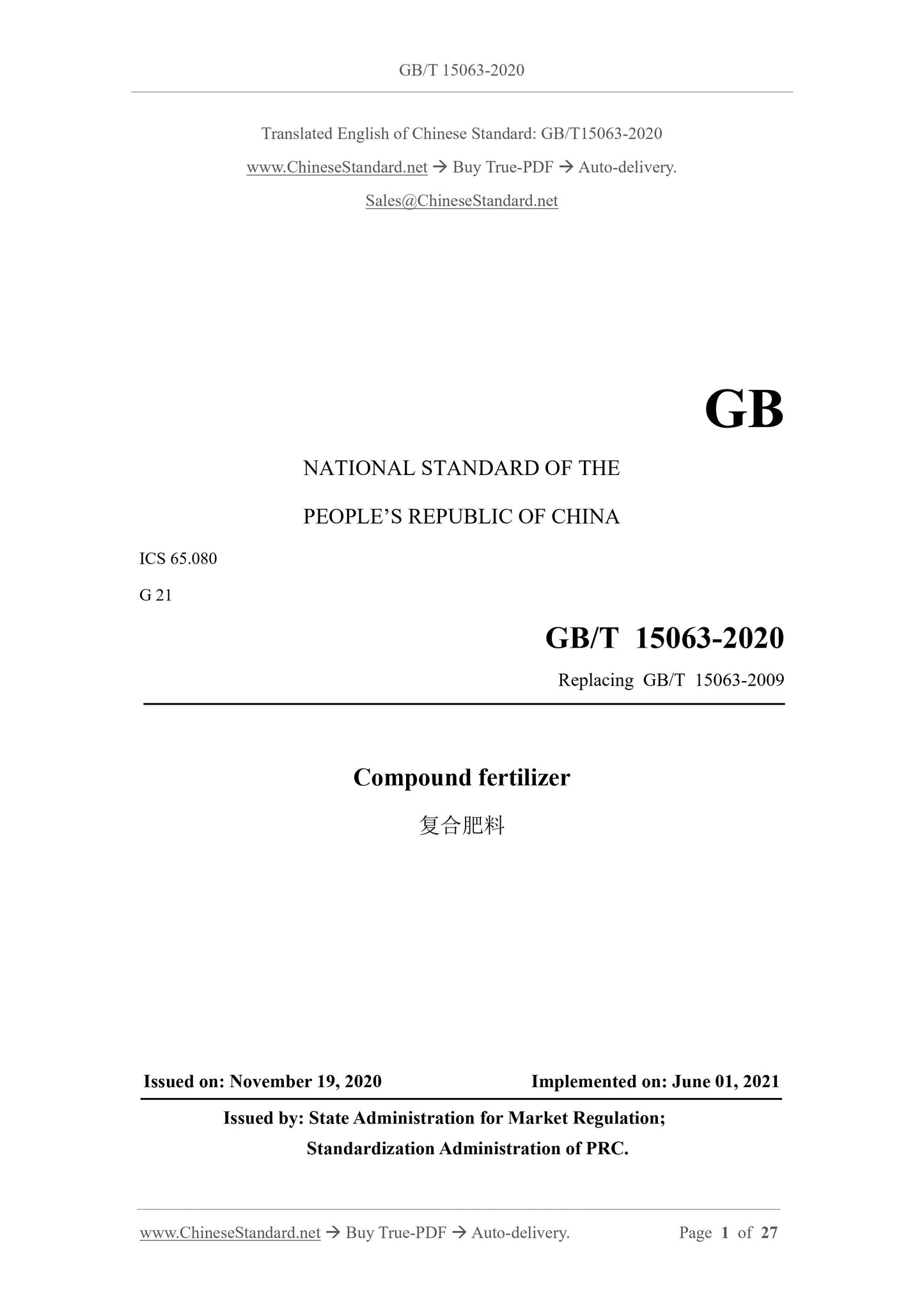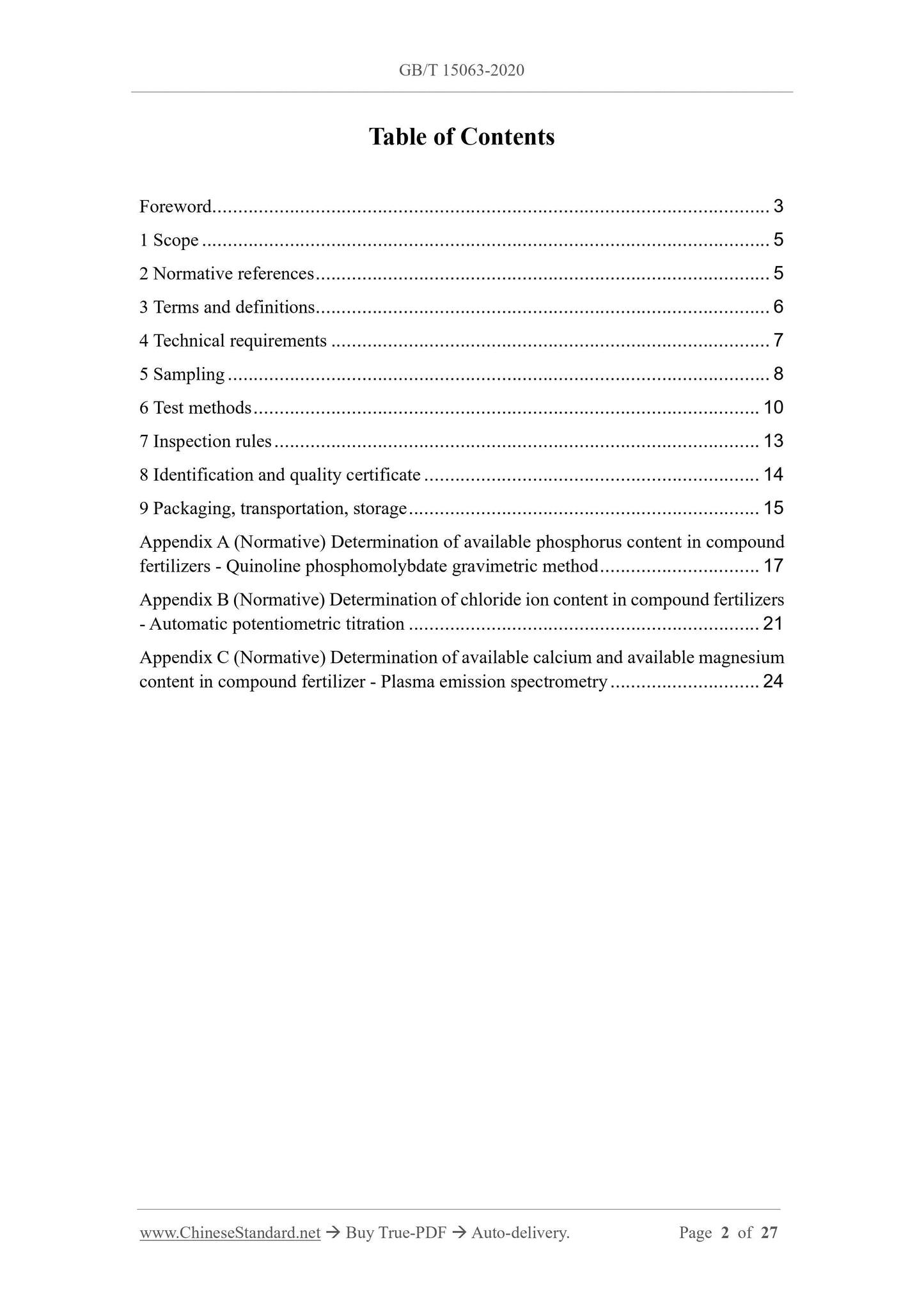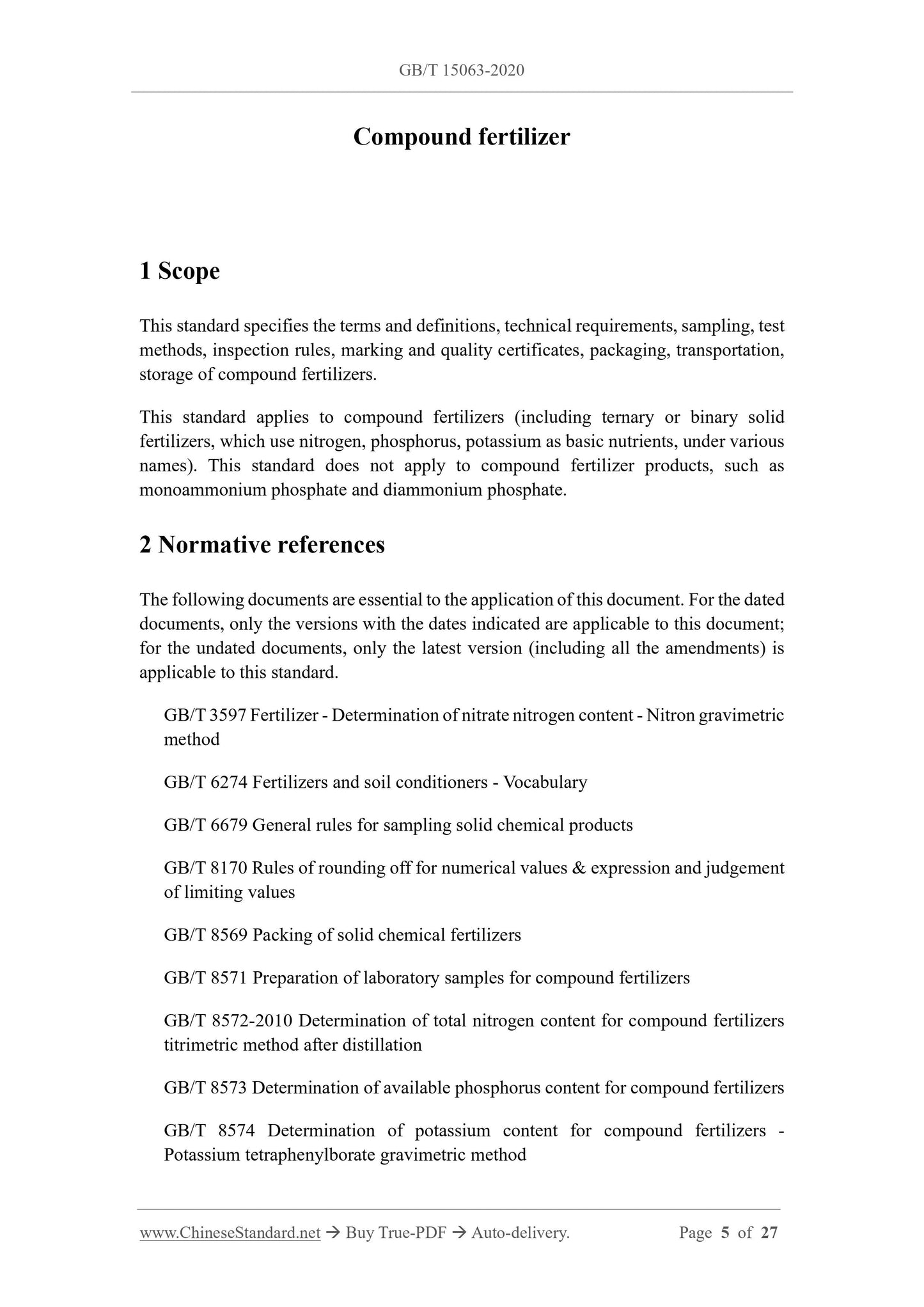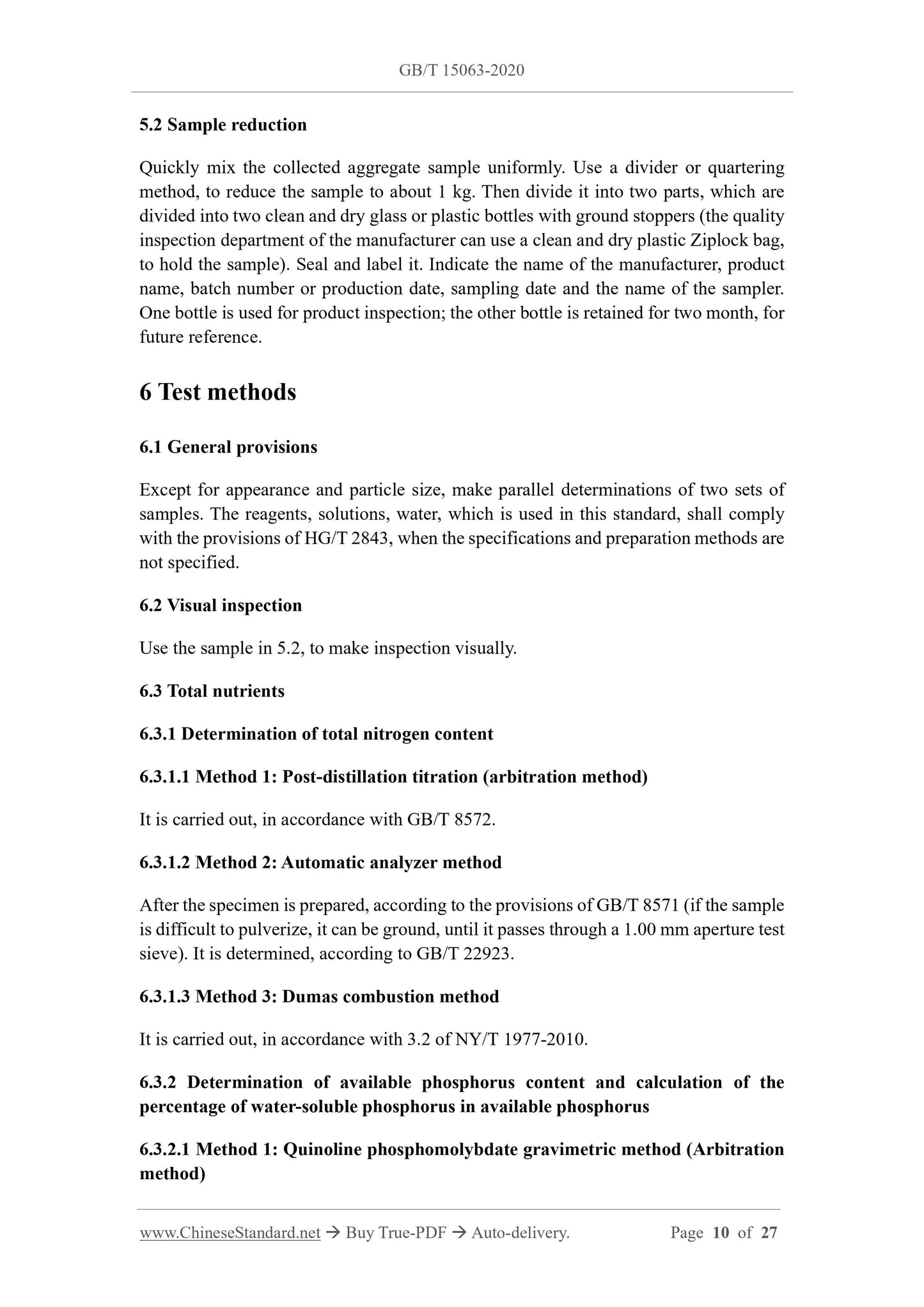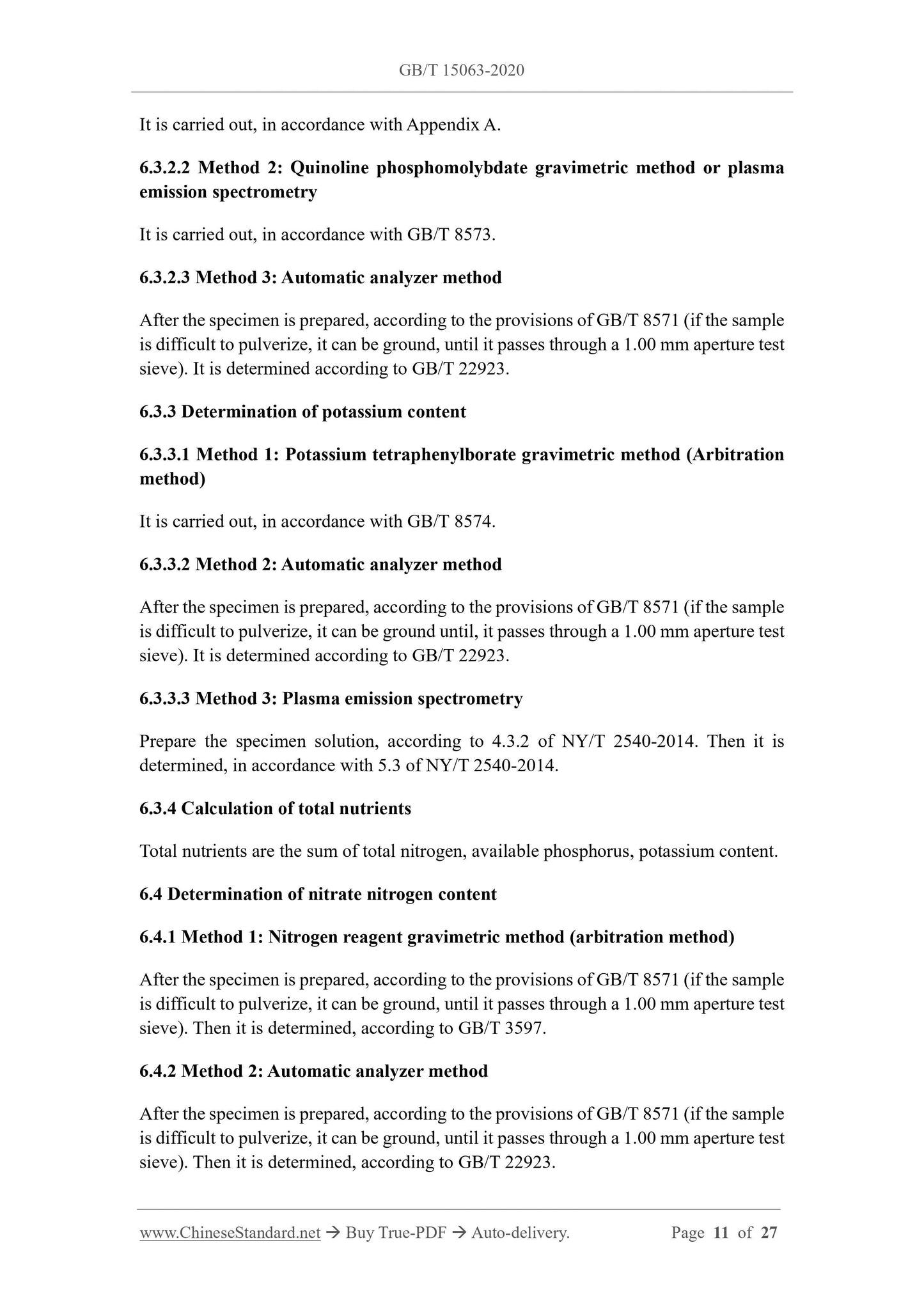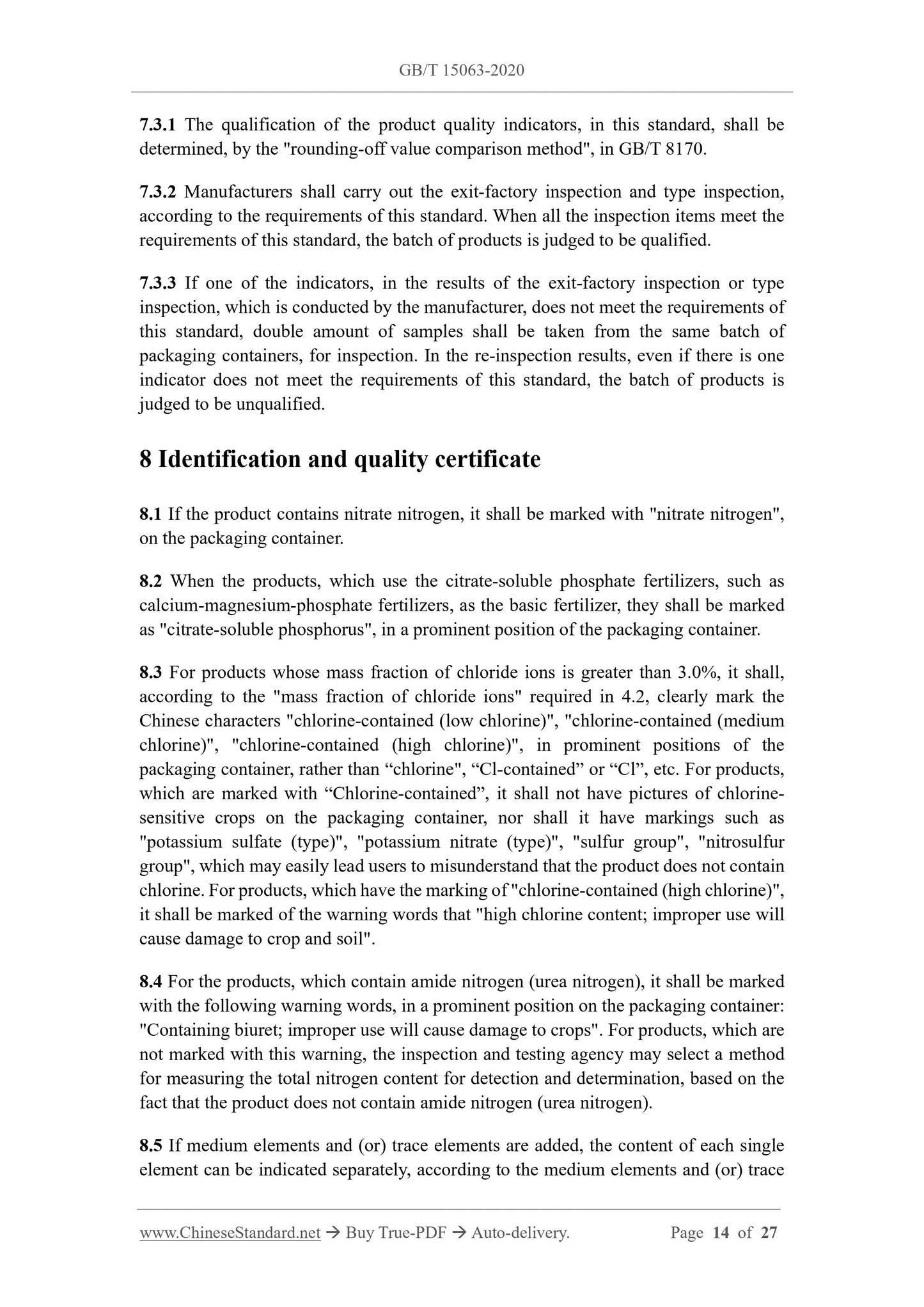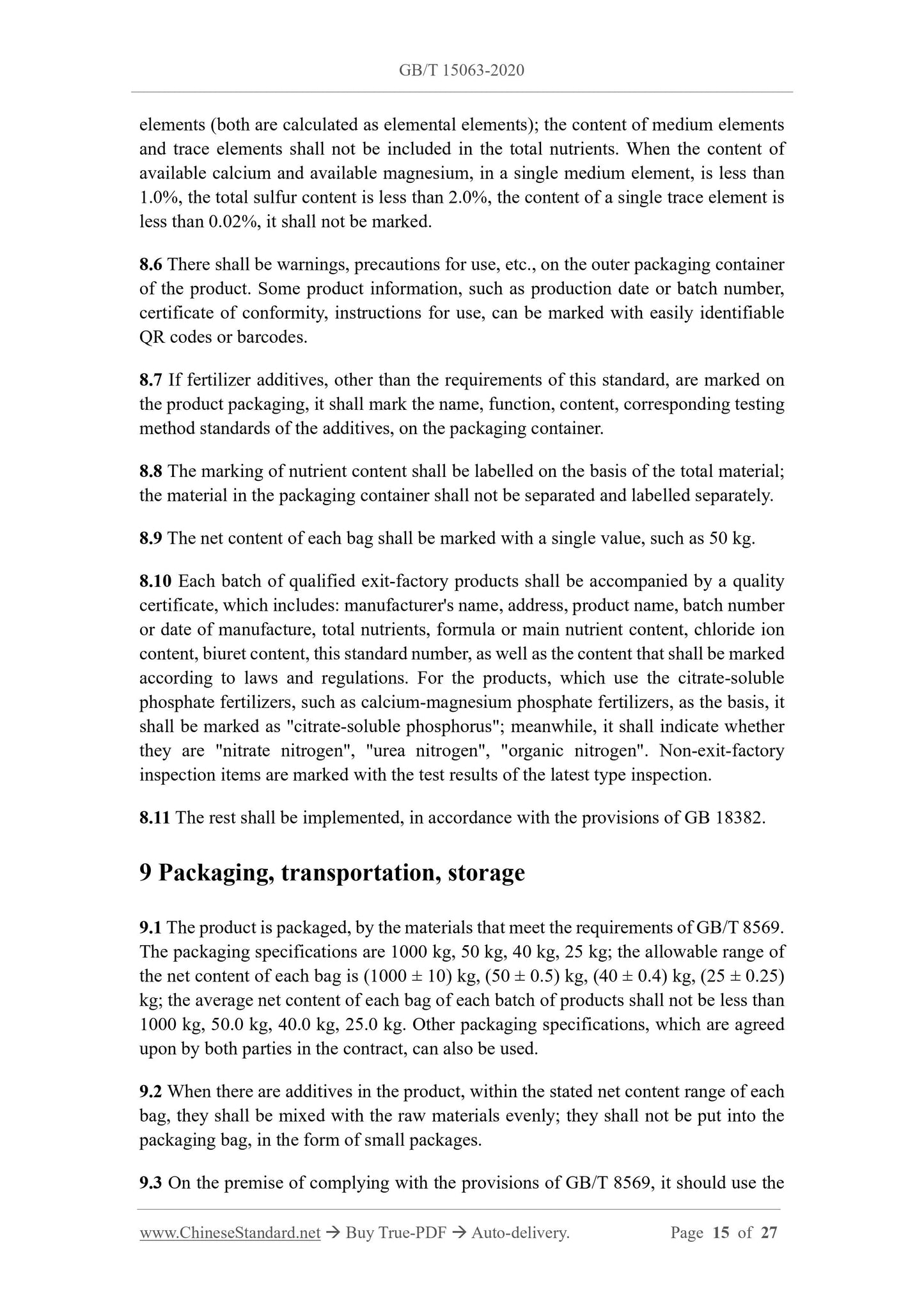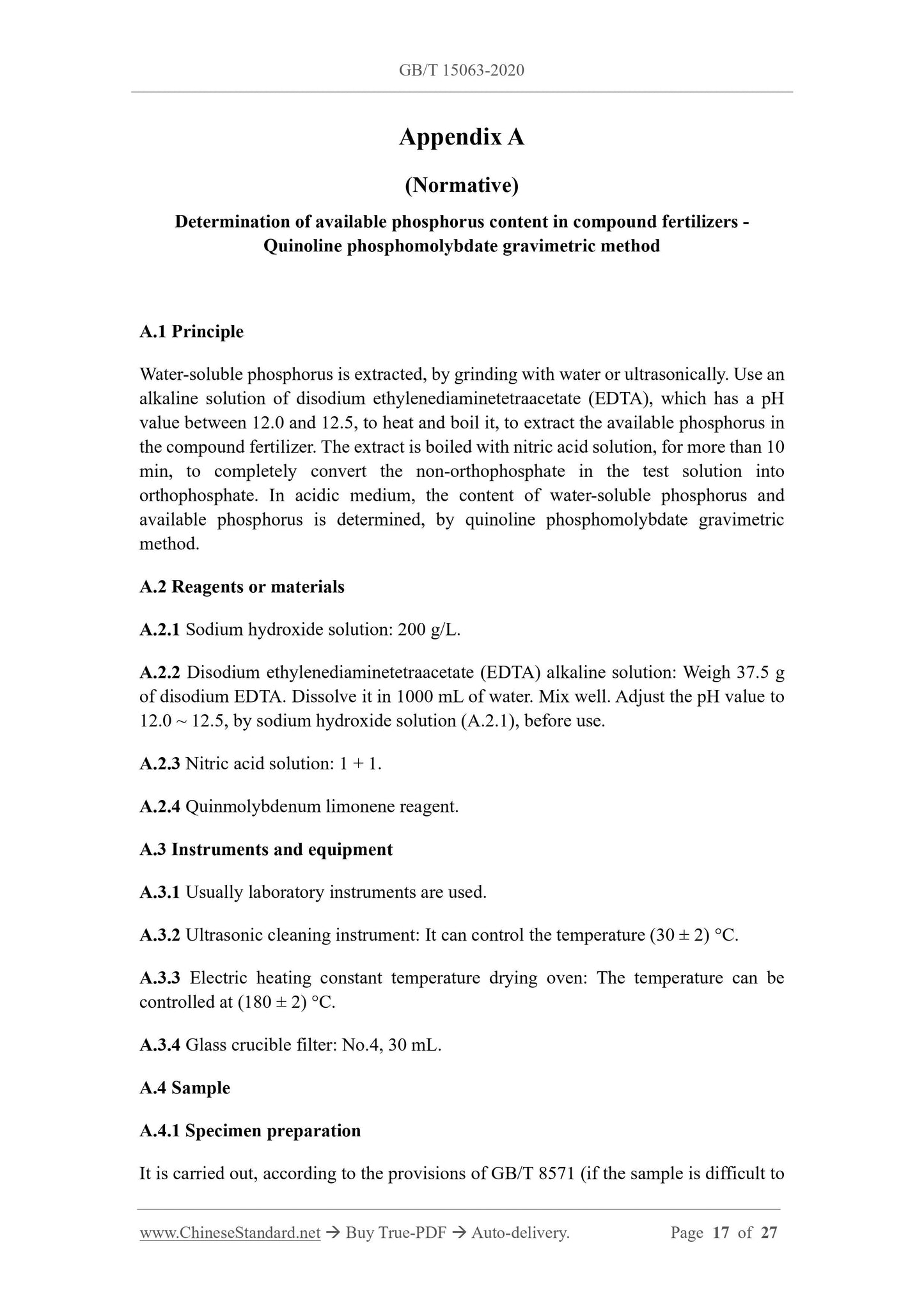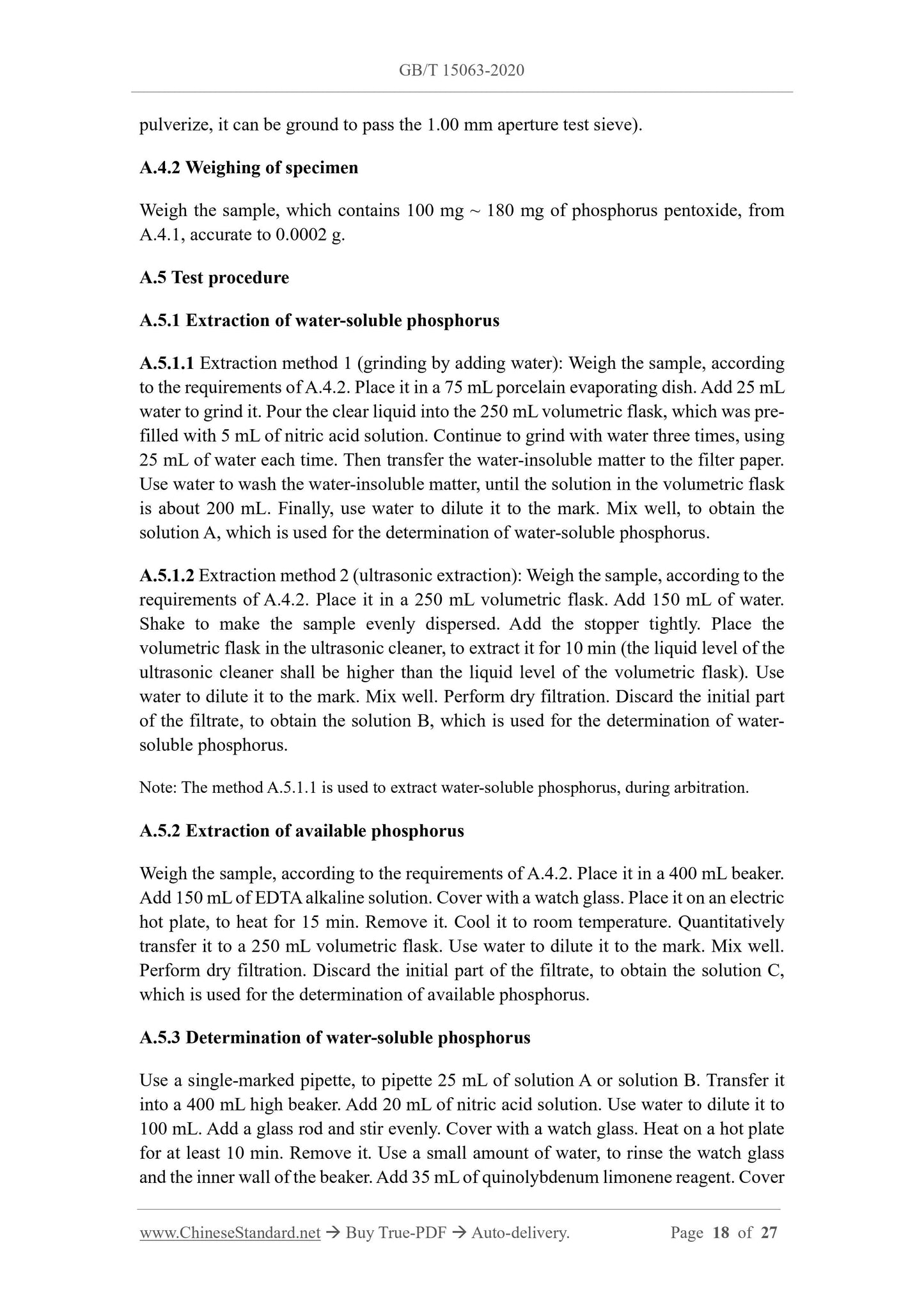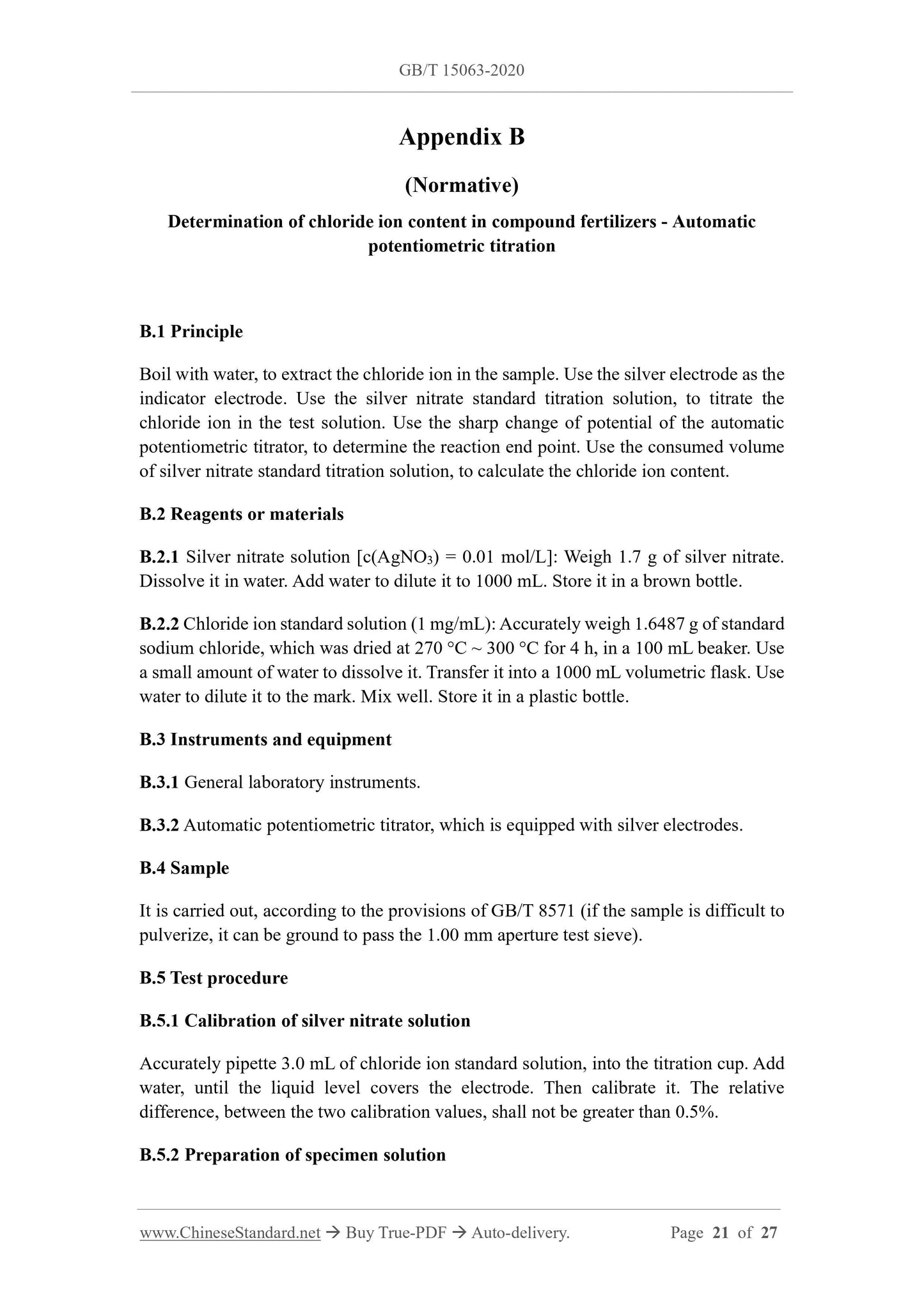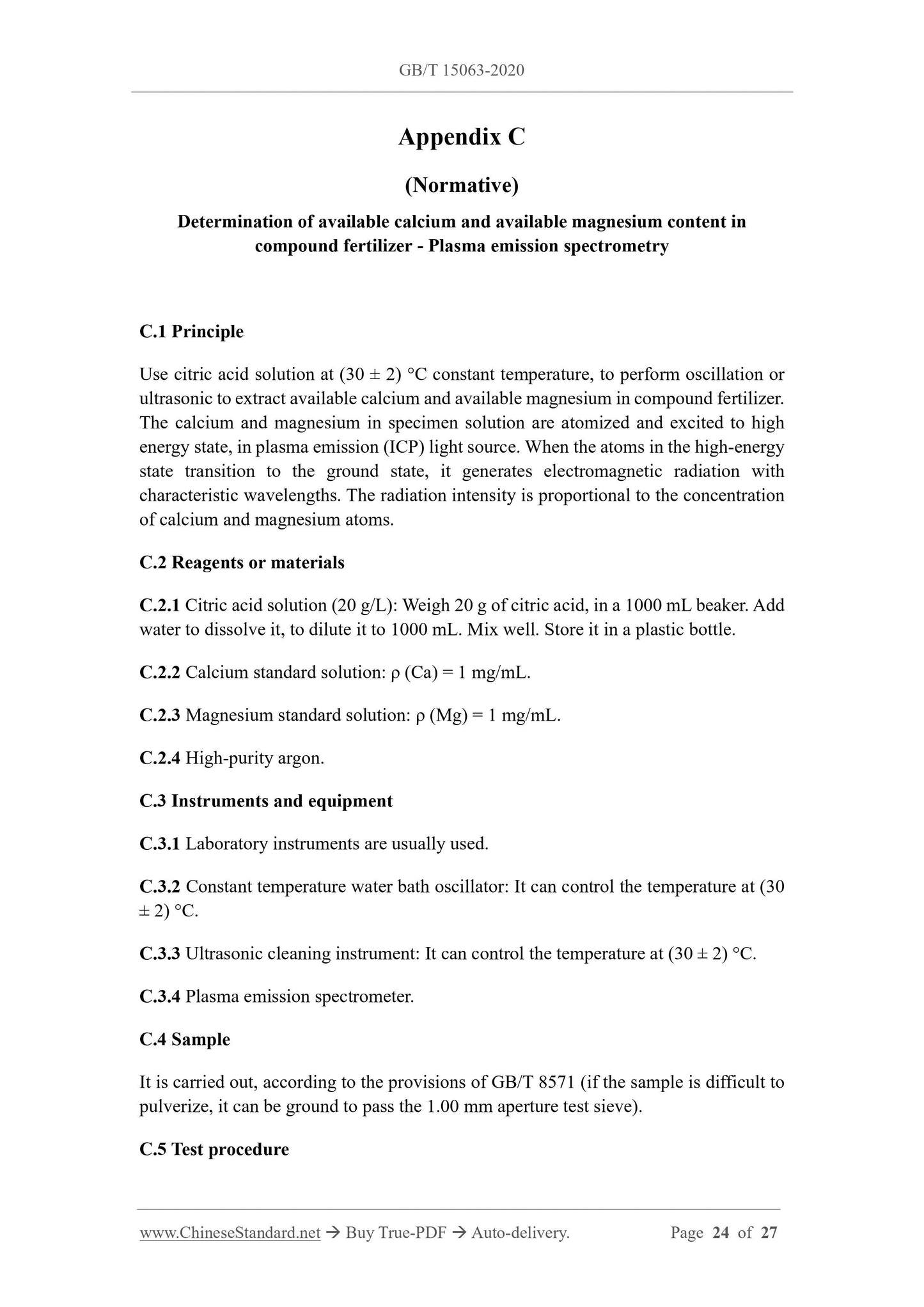1
/
of
12
www.ChineseStandard.us -- Field Test Asia Pte. Ltd.
GB/T 15063-2020 English PDF (GB/T15063-2020)
GB/T 15063-2020 English PDF (GB/T15063-2020)
Regular price
$260.00
Regular price
Sale price
$260.00
Unit price
/
per
Shipping calculated at checkout.
Couldn't load pickup availability
GB/T 15063-2020: Compound fertilizer
Delivery: 9 seconds. Download (and Email) true-PDF + Invoice.Get Quotation: Click GB/T 15063-2020 (Self-service in 1-minute)
Newer / historical versions: GB/T 15063-2020
Preview True-PDF
Scope
This standard specifies the terms and definitions, technical requirements, sampling, testmethods, inspection rules, marking and quality certificates, packaging, transportation,
storage of compound fertilizers.
This standard applies to compound fertilizers (including ternary or binary solid
fertilizers, which use nitrogen, phosphorus, potassium as basic nutrients, under various
names). This standard does not apply to compound fertilizer products, such as
monoammonium phosphate and diammonium phosphate.
Basic Data
| Standard ID | GB/T 15063-2020 (GB/T15063-2020) |
| Description (Translated English) | Compound fertilizer |
| Sector / Industry | National Standard (Recommended) |
| Classification of Chinese Standard | G21 |
| Classification of International Standard | 65.080 |
| Word Count Estimation | 17,182 |
| Date of Issue | 2020-11-19 |
| Date of Implementation | 2021-06-01 |
| Older Standard (superseded by this standard) | GB/T 15063-2009 |
| Regulation (derived from) | National Standard Announcement No. 26 of 2020 |
| Issuing agency(ies) | State Administration for Market Regulation, China National Standardization Administration |
Share
